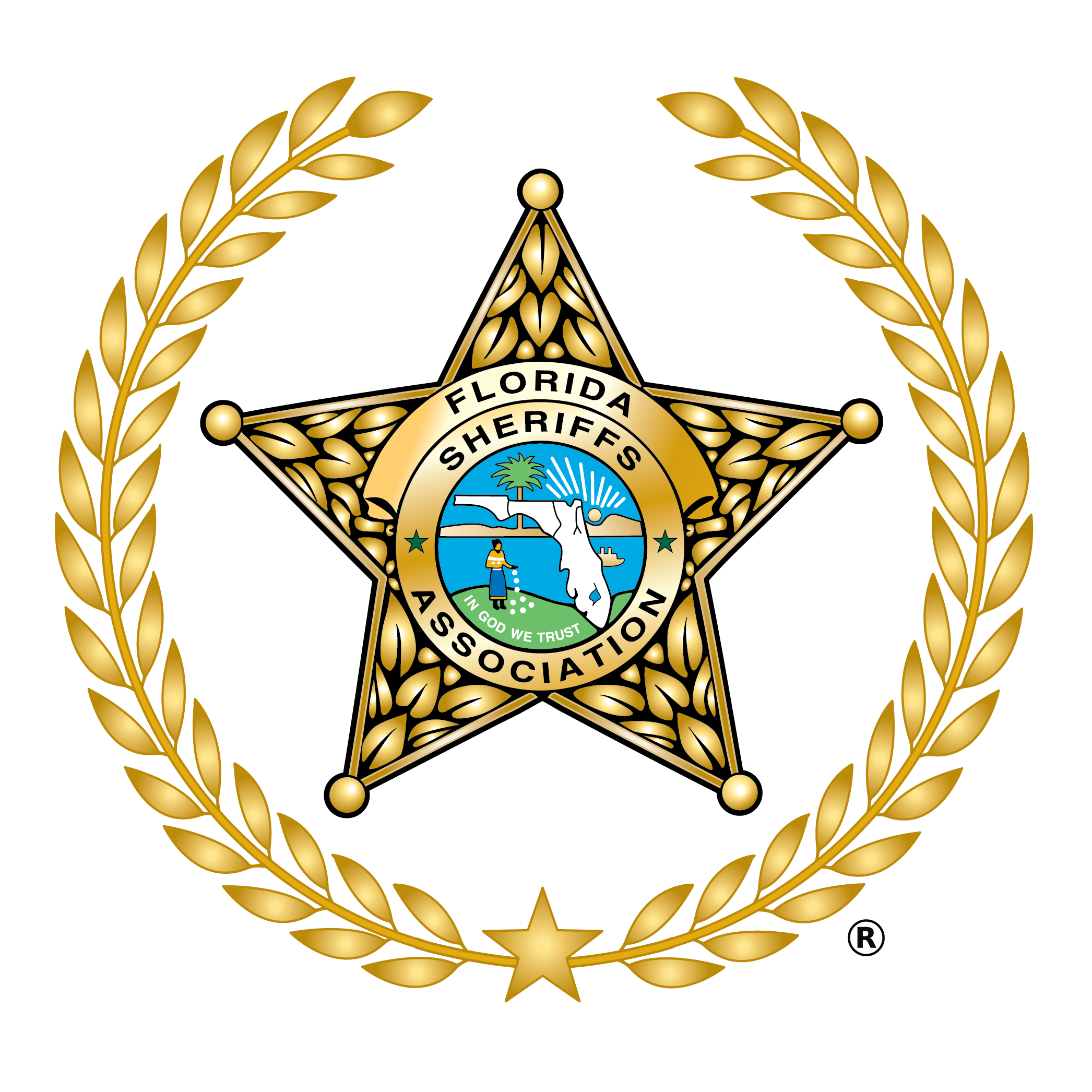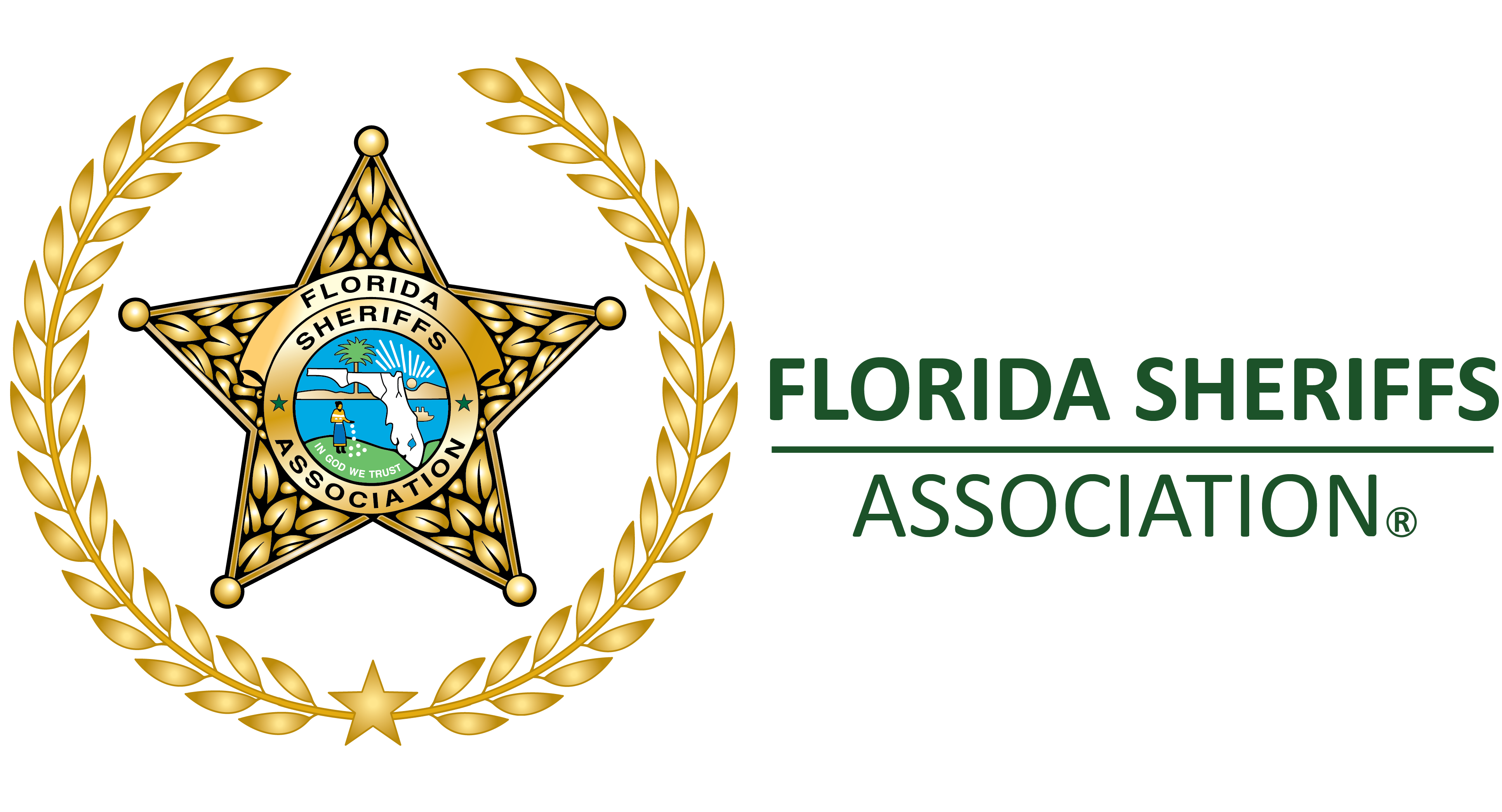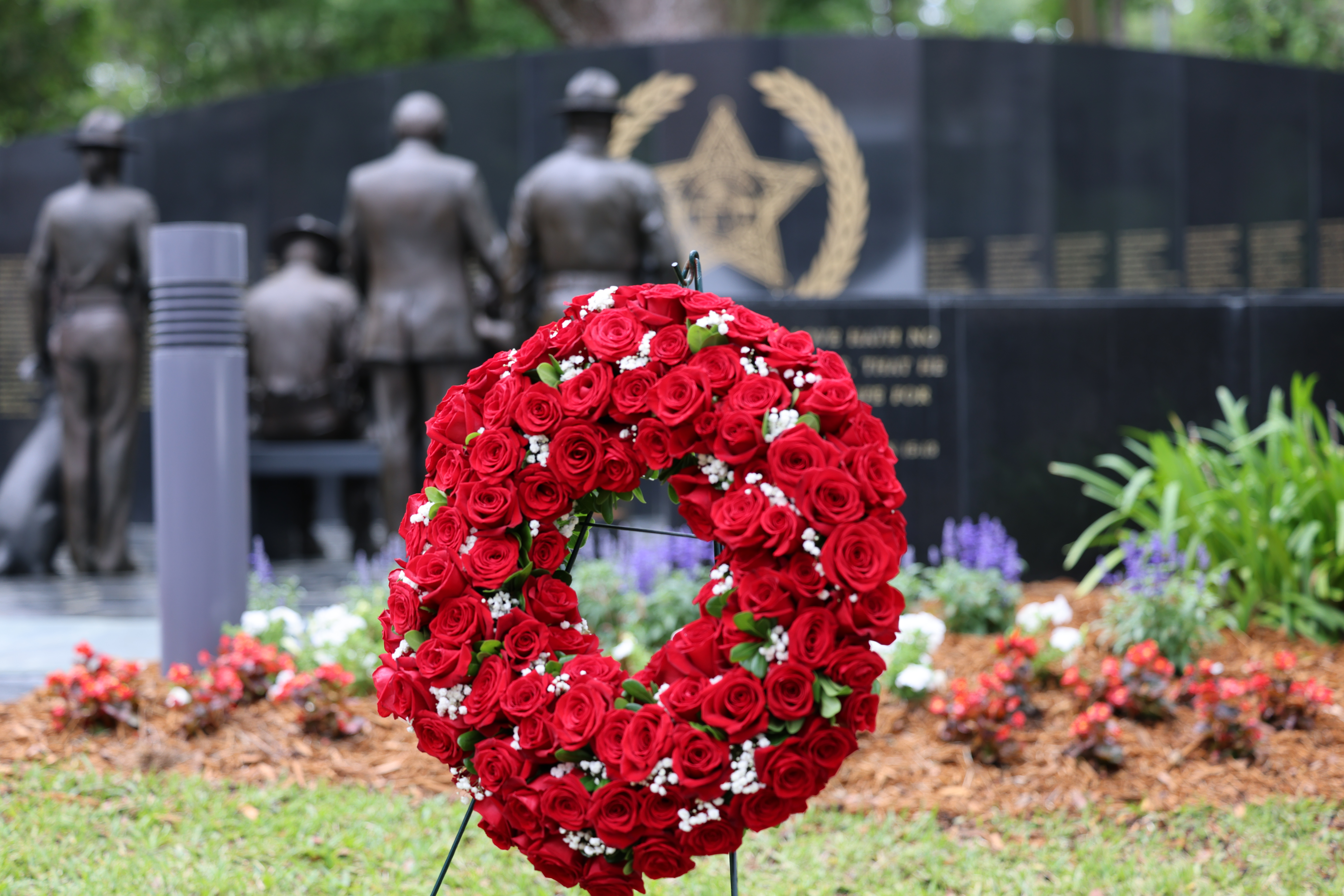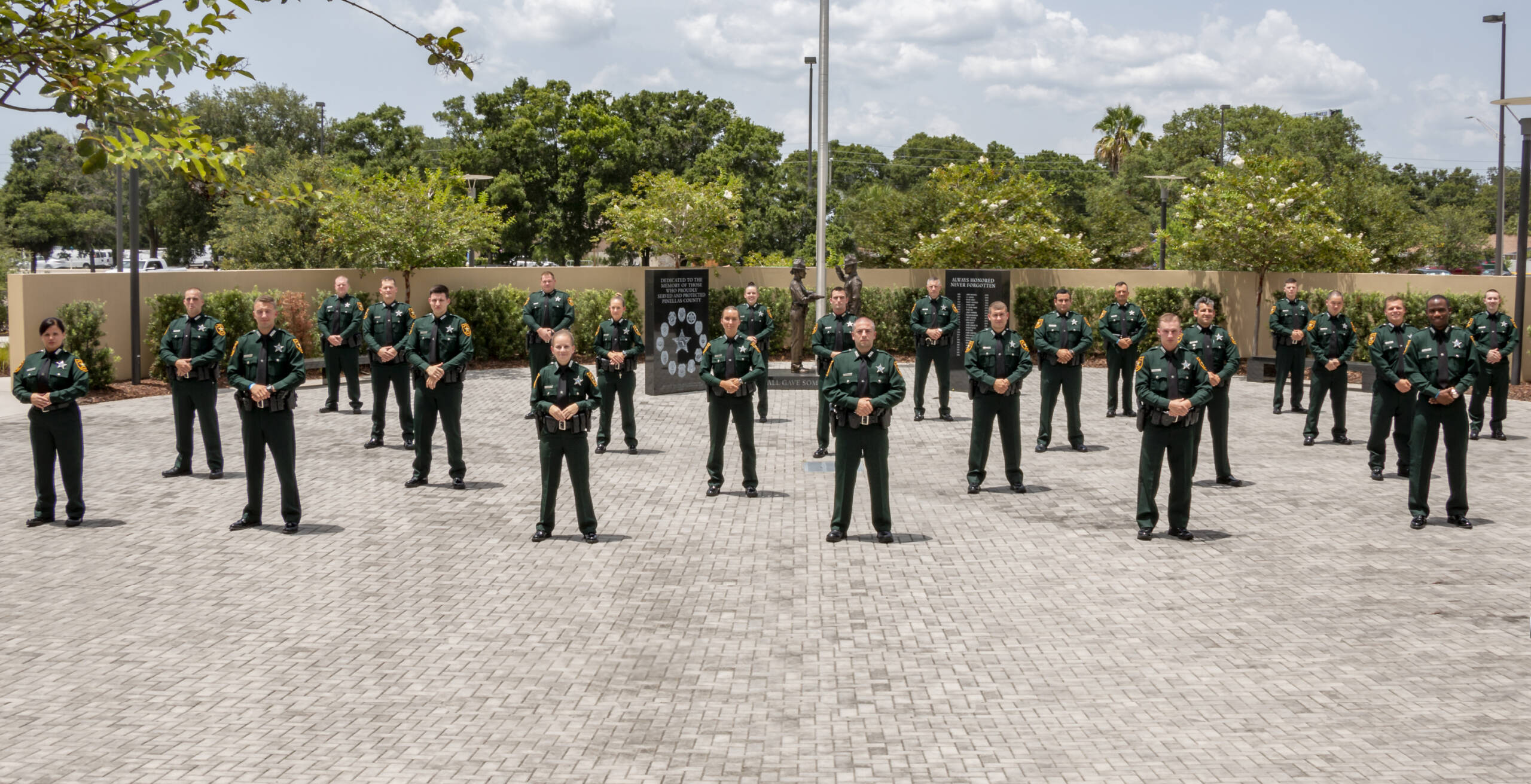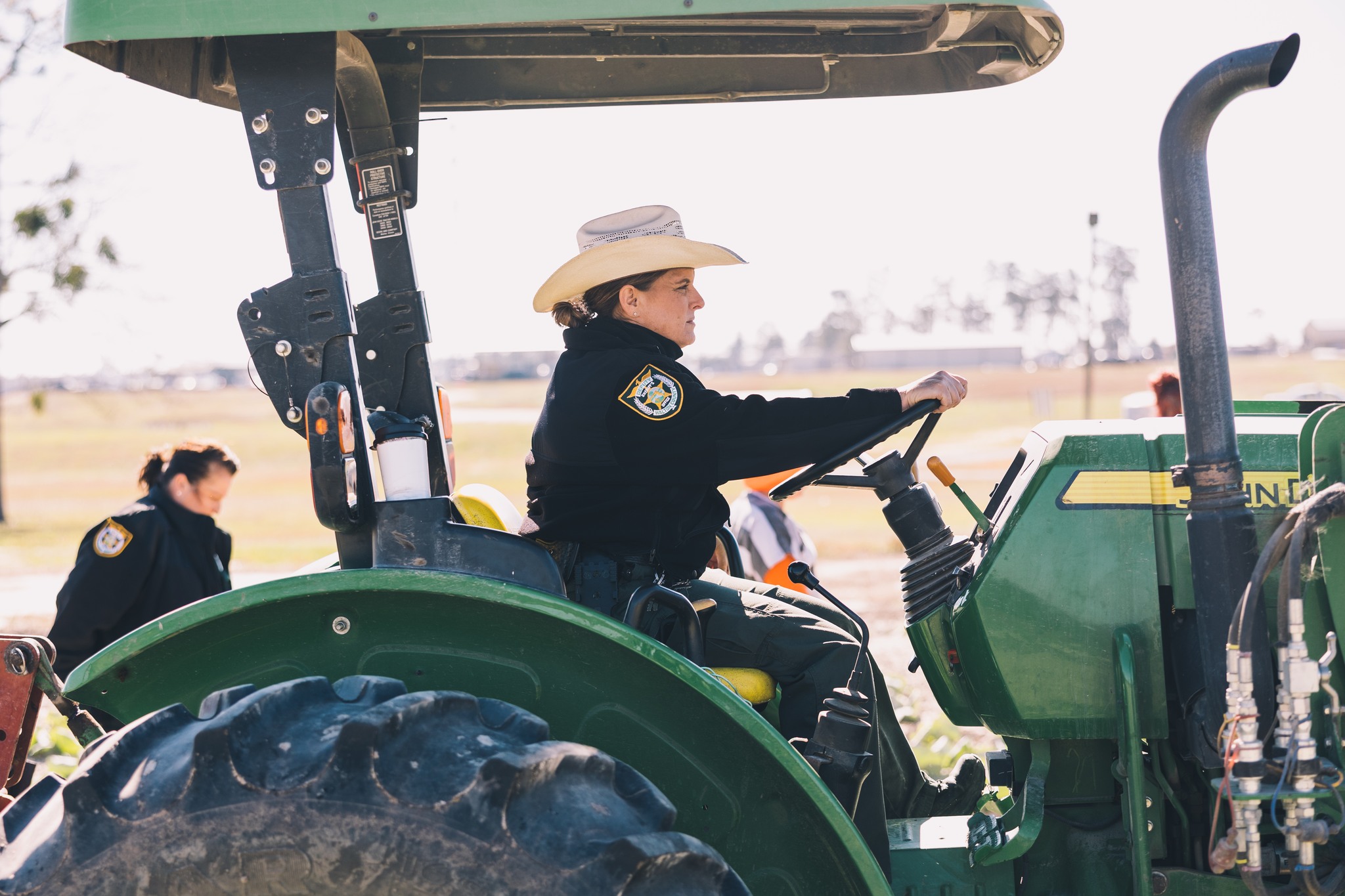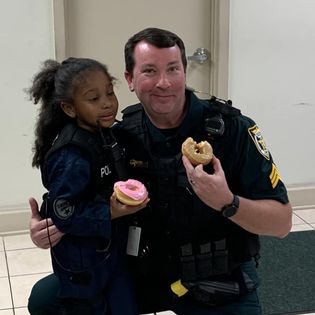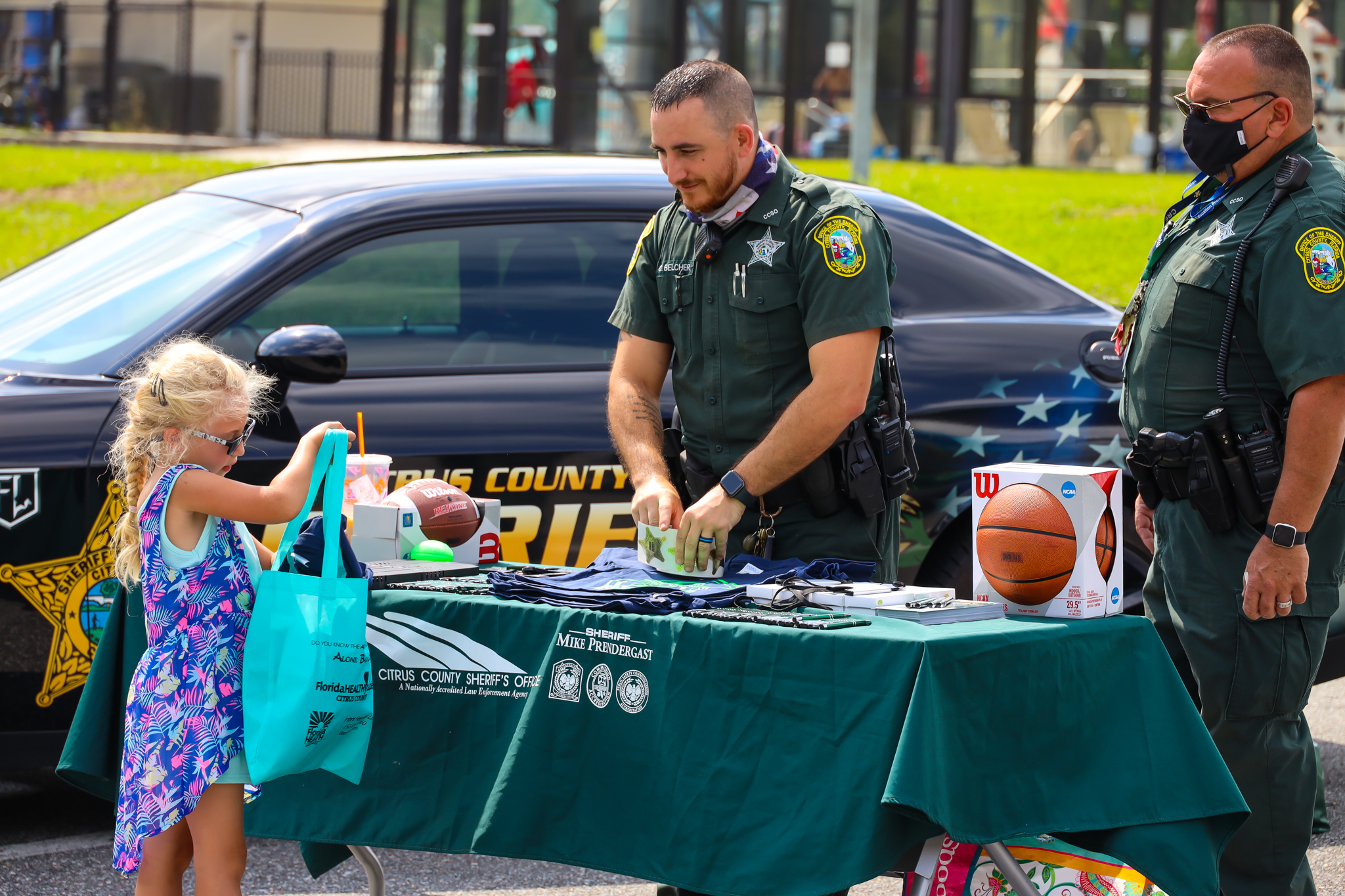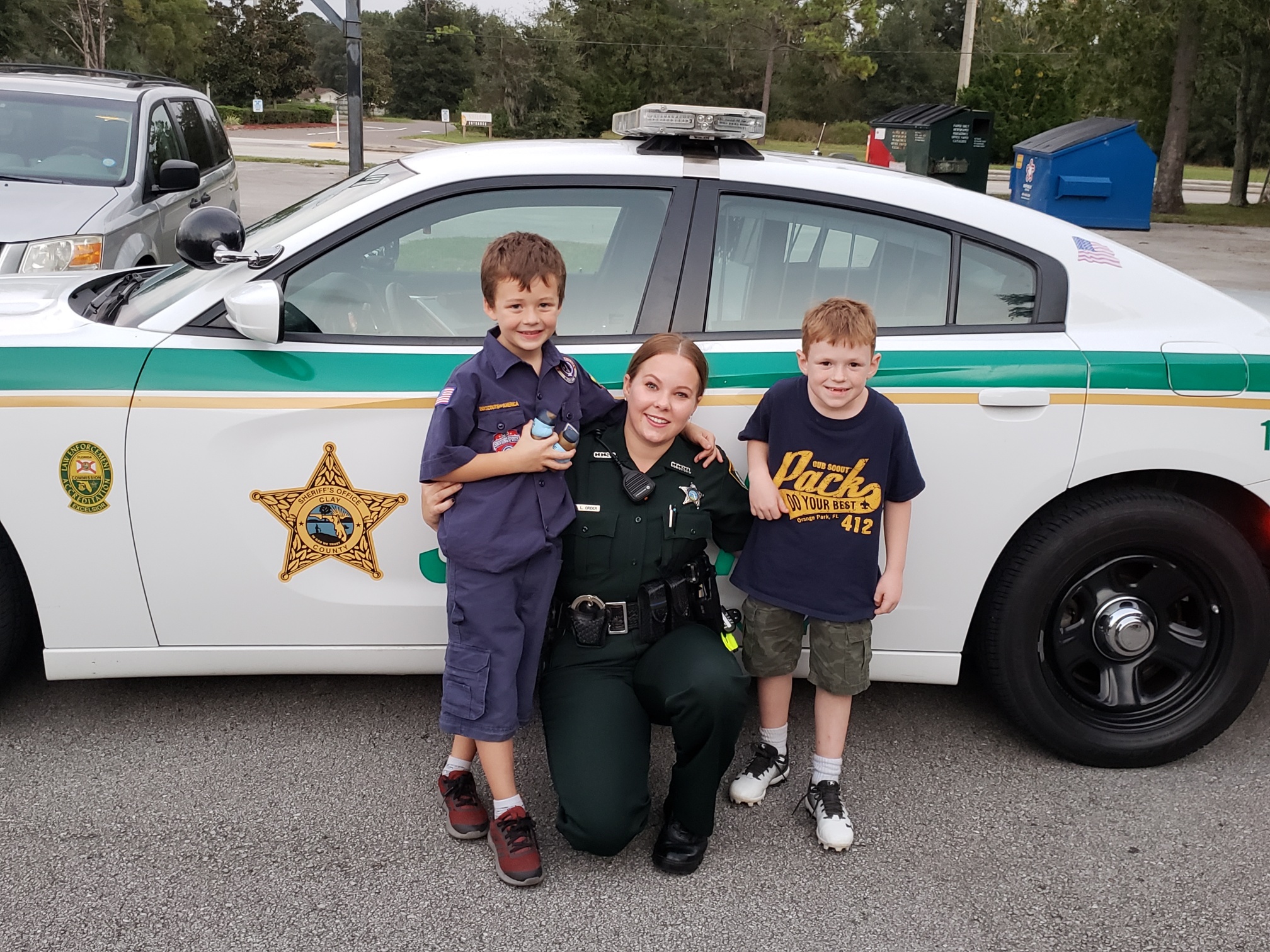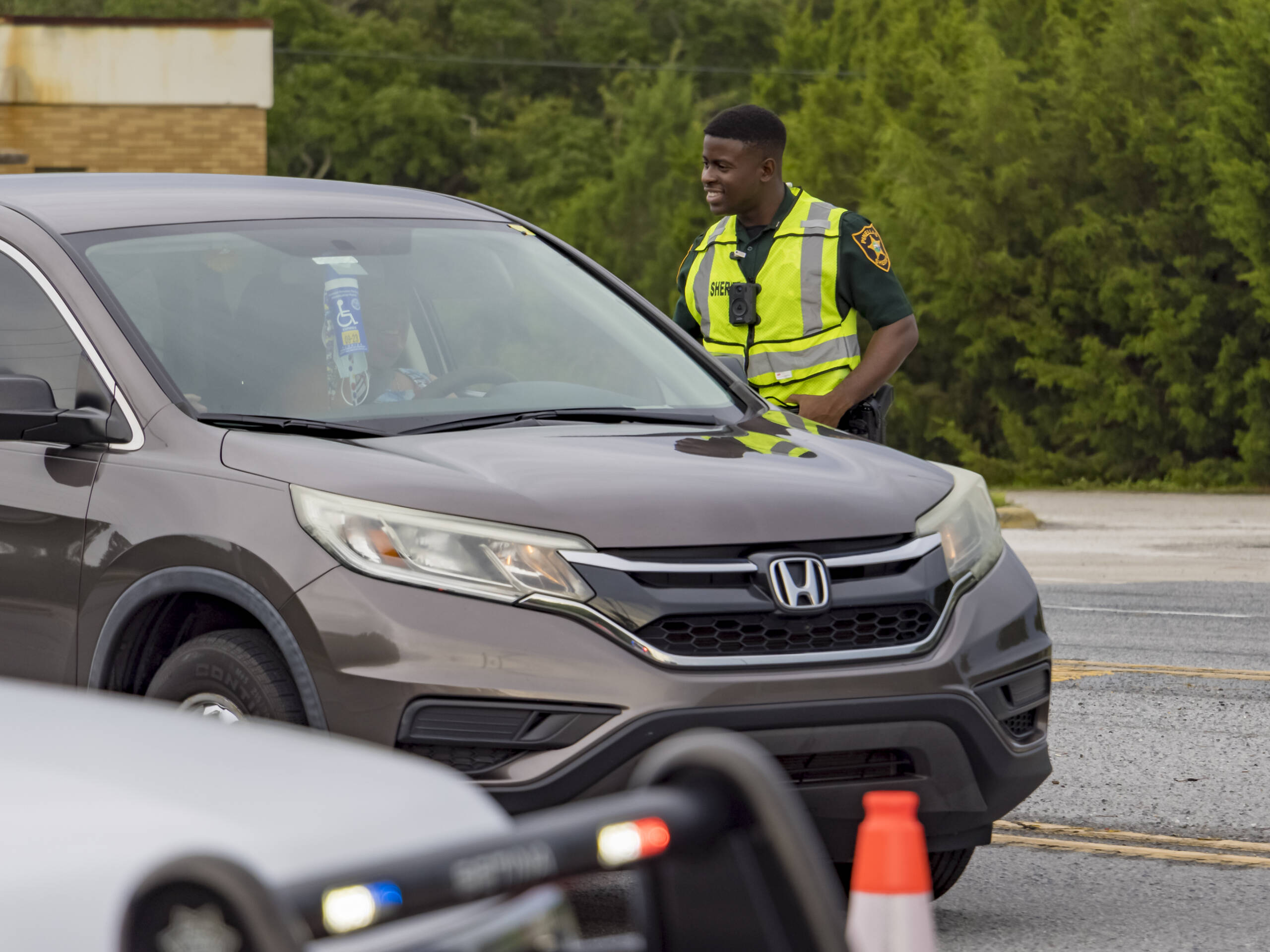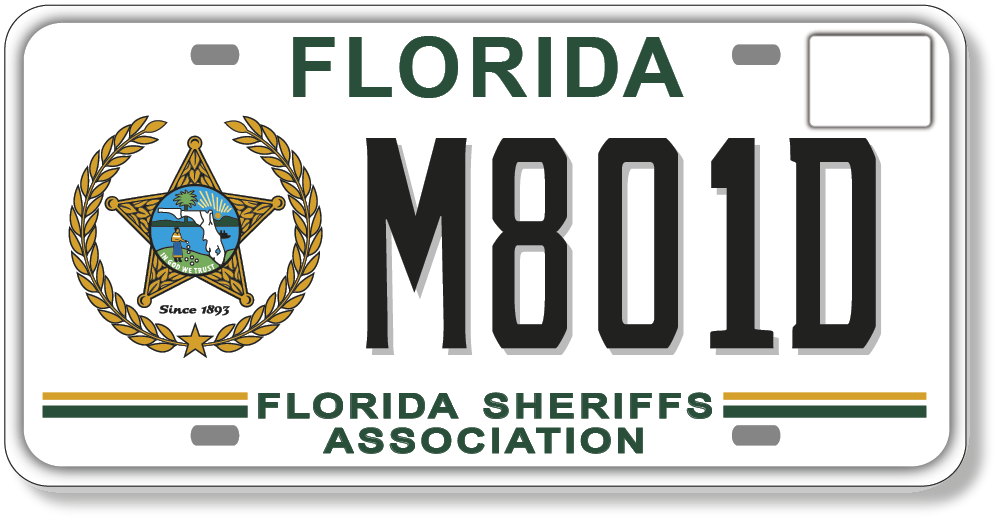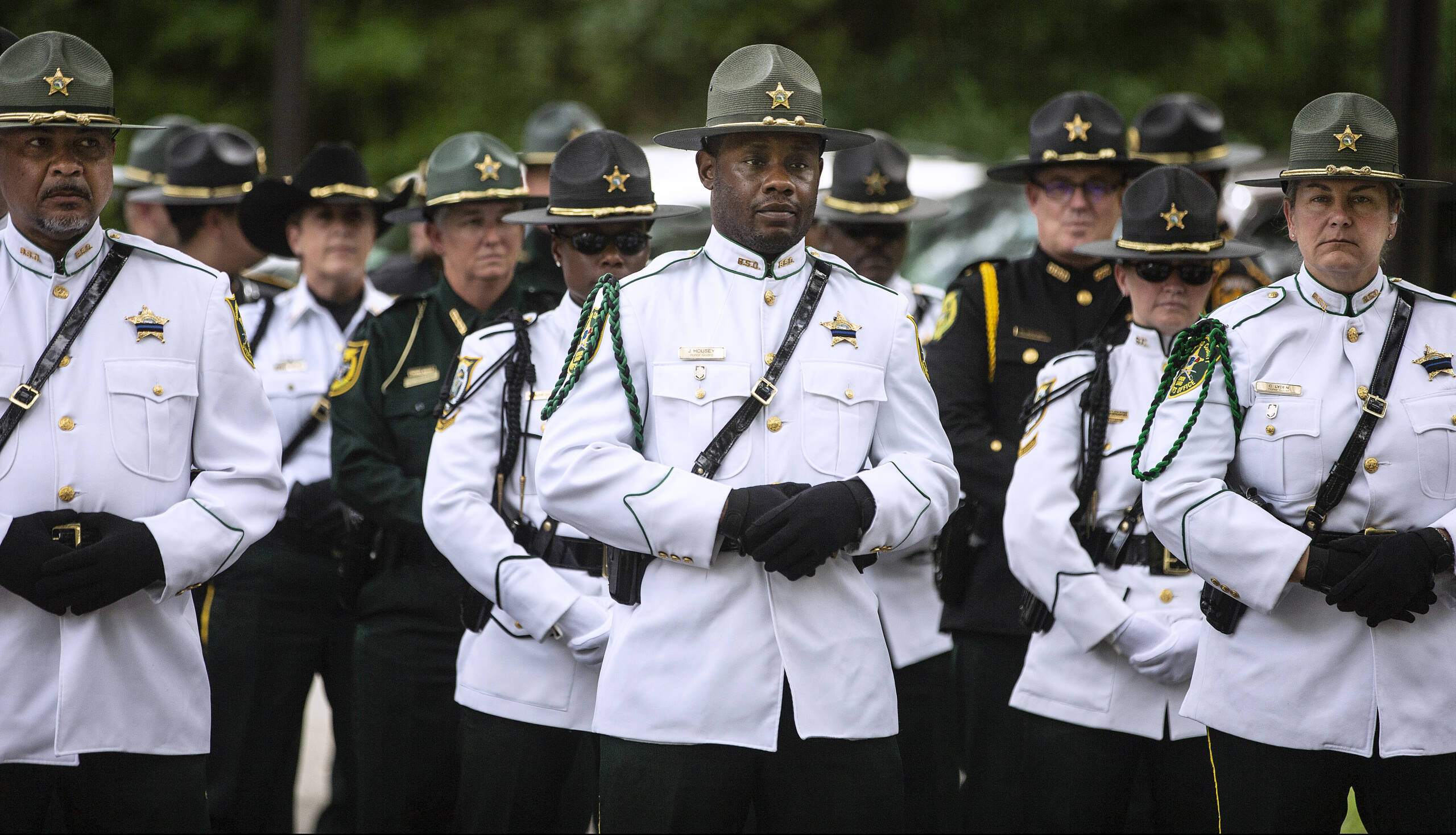Florida’s Appointed Women Sheriffs: Law Enforcement Pioneers
By David Brand, Florida Sheriffs Association
When the trumpet sounded for World War II, women answered the call to duty. The WASP, or Women Aircorps Service Pilots, were civilians who trained U.S. pilots for war and ferried aircraft. “Rosie the Riveter” became the synonym for the thousands of women who built airplanes and ships. Much like these heroes, Florida has a very small community of women who were appointed sheriff by the governor, upon the untimely deaths of their husbands who had been the elected sheriffs, paving the way for women to be accepted into the law enforcement profession.
The Genesis of the Florida Sheriff
The genesis of the Florida sheriff can be traced back to when Florida, as a Spanish colony, came under the Stars and Stripes when President James Monroe appointed Andrew Jackson the Commissioner and Provisional (military) Governor. The president wrote to Jackson, “I have confidence that your appointment will be immediately and most beneficially felt. Smugglers and slave traders will hide their heads, pirates will disappear and the Seminoles cease to give trouble.”[1] Consequently, jurisdiction establishing East Florida took place at St. Augustine on July 10th, 1821. A week later, on July 17th, Andrew Jackson himself accepted the transfer of West Florida at Pensacola.[2]
Before the territory was formerly organized by Congress on March 30th, 1822, Jackson began issuing commands and ordinances. The establishment of a sheriff came in Section 4 of an ordinance promulgated by the governor on July 21st, 1821. It provided that a sheriff, court clerk, and judge would be appointed for the courts of the territory’s first two counties; St. Johns and Escambia.[3]
The Florida Sheriffs Association’s 200th Anniversary Celebration of the Office of Sheriff
Sheriff A. U. Hilleary, who was elected sheriff of Alachua County in 1892, was the force behind the formation of the Florida Sheriffs Mutual Benefit Association. On Thursday, March 23rd, 1893, representatives from 35 counties gathered in Jacksonville to form their organization. Their original Constitution stated that the organization was to be made up of Florida’s sheriffs, and that the purpose was to provide united action among the members in assisting each other to perform their duties.[4] As part of the Florida Sheriffs Association’s celebration of the 200th anniversary of the Office of Sheriff, we are celebrating the contributions made by the so far identified 15 women pioneers who were appointed sheriff after the untimely deaths of their husbands who had been the elected sheriffs.
In researching the history of sheriffs in our state, said Florida Sheriffs Association Executive Director Steve Casey, we realize just how much we owe our ancestors for the sacrifices they made, and we can begin to put their accomplishments in proper historical perspective. The institution of the Office of Sheriff owes a great deal to the first women sheriffs. These courageous women were true pioneers who stepped up at a critical time and answered the call to service when their communities needed them most. Our state will forever owe them and their families a debt of gratitude.[5]
Methodology
The methodology of the research for this article included a review of existing materials on file at the Florida Sheriffs Association, the Sheriffs Star magazine archives, information obtained from sheriffs’ office personnel, research conducted by Ms. Laurel M. Lee and Dr. Josh Goodman of the Florida Secretary of State’s Division of Archives, and personal correspondence and interviews.
The Pioneers
In the early days, especially in rural counties, it was not unusual for the sheriff’s family to reside in the sheriff’s office or even the jail. Given that many of the sheriffs had only three or four deputies, the sheriff’s wife performed many of the duties. They answered the telephone, paid the bills, bought groceries, and cooked for the jail inmates among other duties. As a result of these responsibilities, the sheriffs’ wives became high-profile individuals within their communities.
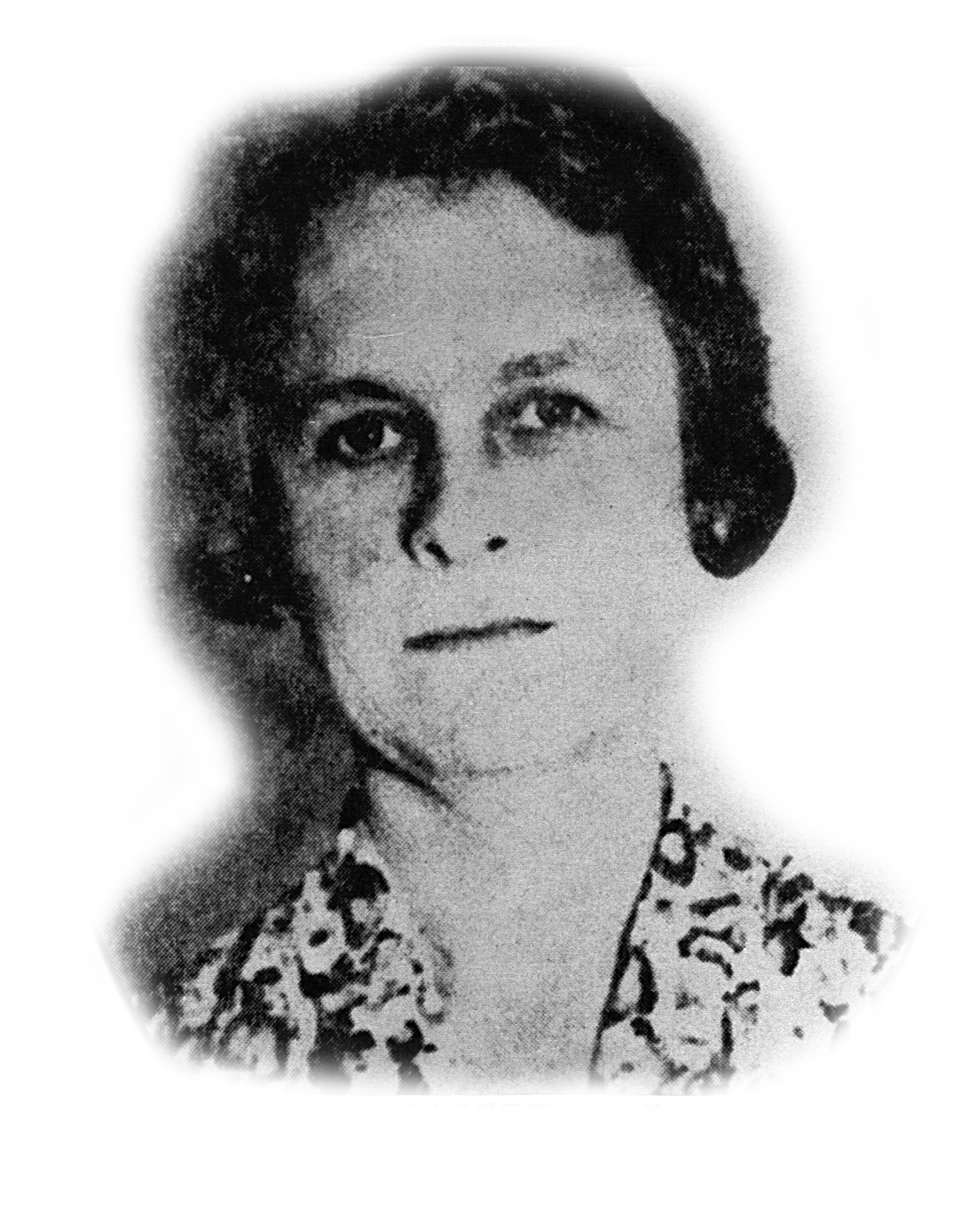 Eugenia Hollingsworth Simmons
Eugenia Hollingsworth Simmons
The first recorded appointed woman sheriff in Florida was Mrs. Eugenia Hollingsworth Simmons of Okeechobee County in 1938.
When Patrick D. Smith wrote A Land Remembered, an award winning historical-fiction novel about cracker life on the plains of deep south Florida in the 1800s, he described Okeechobee County perfectly. Much of the area consists of flat stretches of land peppered with small stands of trees and shrubs as far as you can see and bordered by almost impenetrable wooded areas and wetlands. One can almost imagine the MacIvey family, from A Land Remembered, with their rag-tag cowboys driving Florida scrub cattle across this land on their way to sell them in Punta Gorda. Okeechobee County was truly in the wilderness in the 1930s and populated by tough, resilient people. After Sheriff Claude Simmons died of Pneumonia, Governor Fred P. Cone appointed Simmons’ wife, Mrs. Eugenia Simmons, to replace him. The widow became the state’s first woman sheriff. She never wore a badge or carried a gun and did not seek reelection. She would serve seven months with the assistance of her late husband’s brother, Cossie, who had been a deputy and succeeded her as sheriff at the next election.[6]
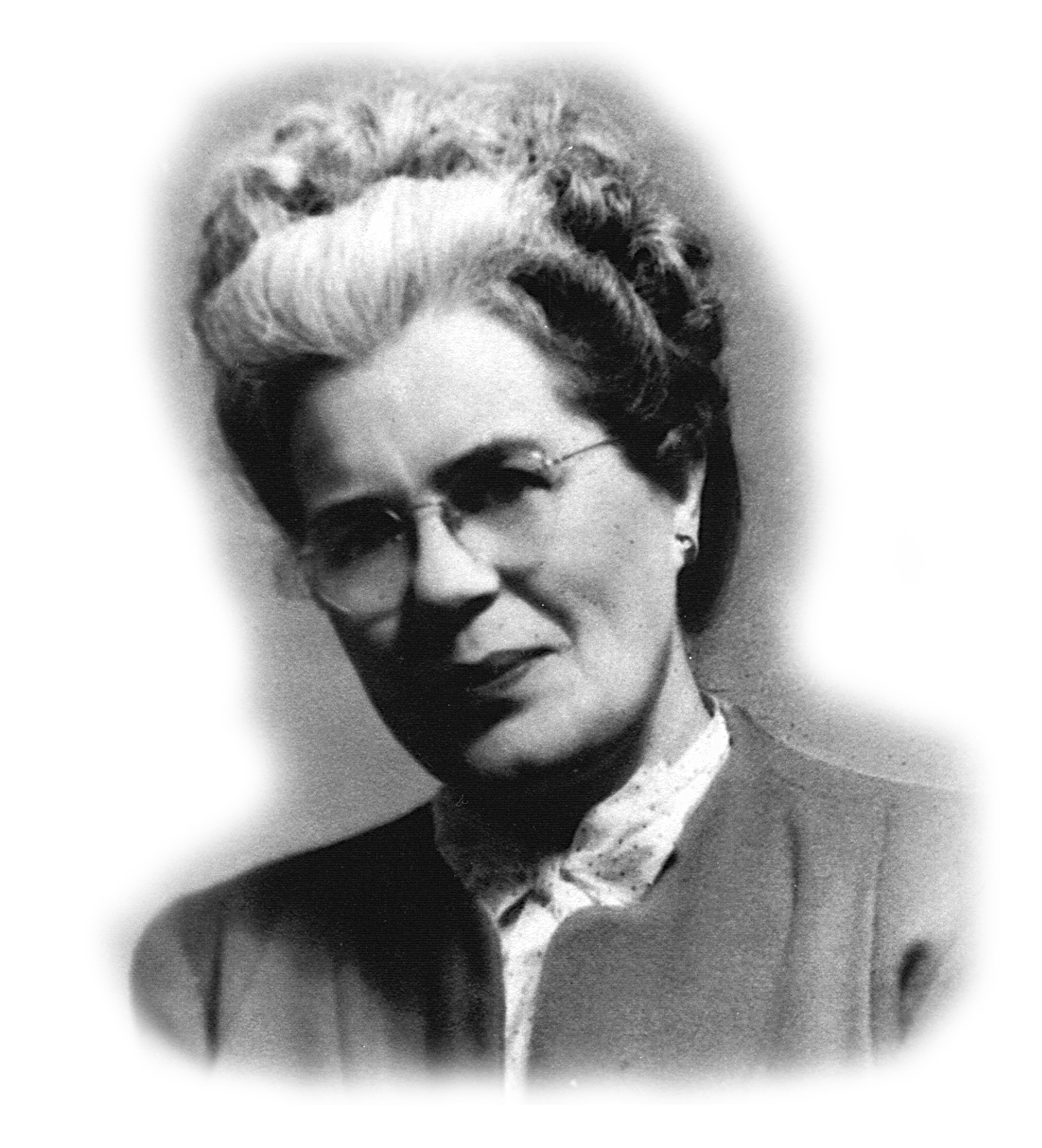 Celia Jernigan Adkinson
Celia Jernigan Adkinson
Governor Fred P. Cone stepped up again and appointed Mrs. Celia Jernigan Adkinson sheriff of Walton County in 1938. Sheriff D.C. Adkinson, her husband, had been fatally shot. She served out her husband’s term and did not seek reelection.[7]
Eva Hutches
Although brief, Eva Hutches, the wife of Sheriff Clint “C.J.” Hutches, served as sheriff of Manatee County for 12 days, September 12th – 24th, 1942, following the untimely death of her husband from a stroke.[8]
There is some inconsistency about the spelling of Mrs. Hutches name. Archival information from the Florida Secretary of State indicates that her name was spelled Hutchins.[9] This could account for some information being lost to history.
Under the law, the Democratic Executive Committee was to call a special primary for voting on candidates for the office, and if no candidate received a majority of the whole vote cast, then a second primary was to be held within 10 days of the first vote. This left the question of who would hold the office until the vote could be held. Governor Spessard Holland was to appoint a temporary successor. He wished to assure that no one who would run for the office in the special election would be appointed. While he was waiting to make his decision, the County Commission acted to appoint Mrs. Hutches to the position. The body agreed to recommend her to the governor for appointment to fill the unexpired term of her husband, which would have been until the next scheduled election in 1944. So, for 12 days, Manatee County was to have a woman sheriff.[10] Mrs. Hutches was offered the appointment by Governor Holland based on the recommendation of the County Commission and numerous citizens of the county. She advised him, however, that she did wish to run for election to the office. As a result, the governor chose to appoint Shirley Dewey Smith, the Chief Deputy who served under Sheriff C. J. Hutches, because he agreed not to run for sheriff in the special election. Appointed Sheriff Dewey Smith served as sheriff from September 25th until November 11th, 1942. During the special election on October 13th, 1942, none of the five candidates had a majority forcing a run-off between the top two on October 20th. Mrs. Eva Hutches lost by 206 votes in that run-off to Roy F. Baden; 2140 to 2346 votes.[11]
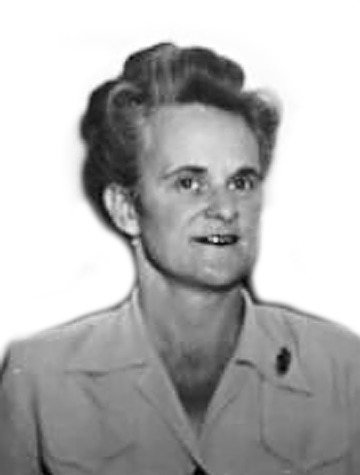 Marguerite Pridgen Baldree
Marguerite Pridgen Baldree
Marguerite Pridgen Baldree was appointed sheriff of Sumter County in 1946 after her husband, Sheriff M.W. “Mose” Baldree was killed in a hunting accident.
Sheriff Mose Baldree had been elected sheriff in 1945. On a date that has been lost to history in 1946, Sheriff Baldree was hunting about eight miles west of Inverness. He had climbed an electric tower to watch for deer while his hunting companion searched in the scrub for deer. His companion, Harold Hunt of Bushnell, returned to the tower that evening and discovered Sheriff Baldree’s body. With one foot badly burned, along with several broken bones from the 60 feet fall, it was decided that he had contacted a high-power electric wire.
After being contacted by numerous voters, Governor Millard Caldwell appointed Mrs. Baldree to fill out the term of her late husband. Before being appointed sheriff, Mrs. Baldree served 17 years in the Citrus County courthouse, 15 years of which spent as deputy clerk of the circuit court.[12]
According to records maintained by the Florida Secretary of State, she relied on her 276 pound brother, Chief Deputy Albert K. Pridgen, to handle disorders and make arrests.[14]
Minnie Cooksey
Mrs. Minnie Cooksey was appointed sheriff of Jefferson County by Governor Fuller Warren in 1949. Sheriff James Robert Cooksey, her husband, was elected sheriff in 1945. After he died of a heart attack in 1949, she was appointed to finish out his term in 1950. According to Mr. Ken Cooksey, her son, she had no intention of running for the office after her appointment was completed.[15]
According to articles published in the Daily Democrat, a Tallahassee newspaper, and the Tampa Tribune, Mrs. Cooksey’s two sons, Kenneth and Glen, were with her when Governor Fuller Warren signed the commission and handed it to her. She was dressed in a white dress, wearing a white hat with a black band. Mrs. Cooksey then discussed her new job and answered reporters’ questions.[16]
Floye Shelfer
Governor Fuller Warren appointed Sheriff Lloyd R. Holton sheriff of Desoto County on November 15th, 1950 to replace the ad interim sheriff, Floye Shelfer.[17] It is unknown how long Ms. Shelfer served or under what circumstances. She had apparently been placed in an interim position by a governmental entity other than the governor.[18] Mrs. Shelfer’s first name was spelled Floy in the 1945 Florida Census.[19]
Clyde Stone Barnes
Mrs. Clyde Stone Barnes was appointed sheriff of Jackson County by Governor Charley Eugene Johns in February 1954 after the death of her husband, Sheriff Ernest F. Barnes, from a heart attack. At the end of her appointed term, Mrs. Barnes qualified to run for sheriff. She placed fifth and lost her bid to Sheriff Roy Robertson who took office in 1955.[20]
Myrtle G. Revels
Mrs. Myrtle G. Revels was appointed sheriff of Putnam County by Governor Charley Eugene Johns on July 8th, 1954 to complete the term of her husband, Sheriff W. J. Revels, who died of a cerebral hemorrhage. Mrs. Revels became the second woman sheriff appointed by Governor Johns in 1954.
She was first sworn in as acting sheriff by Circuit Judge P.B. Revels pending the appointment by the governor. Judge Revels said he followed the recommendation of the County Democratic Committee and the County Bar Association.[21] Mrs. Revels had worked at the sheriff’s office for 20 years before being appointed sheriff.[22] Mrs. Revels served as sheriff until 1955.[23]
Alice Lovett
Mrs. Alice Lovett, five feet tall[24], was appointed sheriff of Jefferson County as an honorarium by Governor LeRoy Collins after the death of Sheriff Jesse H. Lovett, Sr., her husband, on January 7th, 1956. The governor also appointed J. B. Thomas later the same year.[25] Few records exist of her tenure. She was replaced by Sheriff J.B. Thomas who served from 1956 -1966.[26]
Margaret Livingston Pressley
Margaret Livingston Pressley was appointed sheriff of Glades County by Governor LeRoy Collins after her husband, Sheriff C.S. Pressley, died of a heart attack. Mr. Pressley served from March 1956 until the end of his term in January 1957.[27] Sheriff C. S. Pressley had been elected sheriff in 1949 and was at the end of his second term when he died.
Mrs. Pressley originally came to Glades County in 1936 to accept a teaching job. Her teaching career began in Moore Haven in 1936 after graduating from Lander College in Greenwood, South Carolina. In 1941, she switched from grade school to Moore Haven High School where she taught English and Social Studies.[28] Mike Pressley, her son, related that he was very young when his mother was sheriff. She had told him stories about how she rode the streets and answered calls just like her husband had.[29]
Annie Broxson
Mrs. Annie Rachel Gordon Broxson was born in Laurel Hill, Florida. In 1923, she went to Holley Hill, Florida to care for her brother who had injured his leg in a sawmill accident. There, she met her future husband, Bart Broxson, who she married in 1924. They settled in Gulf Breeze where they raised 11 children.[30] Bart was elected sheriff of Santa Rosa County in 1956 so they moved the family to Milton.[31] On Christmas Eve of 1959, Bart was killed in a traffic accident by a drunk driver. Circuit Judge Woodrow Melvin swore Mrs. Broxson in as sheriff. She was sheriff for two days until Governor LeRoy Collins appointed her son, John Broxson who was a minister in Alabama at the time, sheriff.[32]
Agnes McGeHee
Agnes McGeHee was appointed sheriff of Marion County in July 1960 after Sheriff F. L. McGeHee died suddenly of a heart attack. She served for a short time making her the only woman to serve as sheriff of Marion County.[33] F. L. and Agnes McGeHee were the parents of former Ocala police chief and later FDLE administrator Lee McGeHee.
Lula Inez Holton
Mrs. Lula Inez Holton was appointed sheriff of Desoto County on June 13th, 1965 by Governor Hayden Burns upon the death of her husband, Sheriff Lloyd Holton. Born on May 1st, 1913 the 52 year-old grandmother served until the end of her husband’s term in January, 1967.
History reflects that when Governor Burns was considering options to fill the Office of Sheriff, his office was flooded with phone calls and petitions from Desoto County residents asking for Mrs. Holton to finish out her husband’s term.[34]
Mrs. Lisa Allen Norris, her granddaughter, related that her grandmother was a Christian woman; never saying anything negative about others and was loving to the entire community. Mrs. Norris stayed with her at the jail when she was five years old and “had a ball.” She knew most of the inmates and citizens that would come into the office to see her grandmother.[35]
Ethyl Cornelia McDuffy Anderson
Ethyl Anderson was appointed sheriff of Walton County in 1970 following the death of her husband, Sheriff Howard “Andy” Anderson. The appointment was made by Governor Claude Kirk, Jr. Sheriff Andy Anderson had been first elected sheriff in 1961. Sheriff Ethyl Anderson was followed by Sheriff L.S. “Sam” Campbell who took office in 1970 and served until 1977.[36]
Susan W. McCampbell
Susan W. McCampbell was sworn in as acting sheriff and served as the chief deputy of Broward County for four months in 1997. A day after she was named acting sheriff, the Sun Sentinel wrote that “McCampbell will remain chief deputy and run the department until Governor Lawton Chiles appoints an interim sheriff who will serve until the November 1998 election.”[37]
On January 9th, 1998, Governor Chiles appointed Ken Jenne the new sheriff of Broward County.[38]
The Significance of these Pioneers
Females lead the way in professions across the nation and law enforcement is no exception, said Florida Sheriffs Association Deputy Director of Administration Sarrah Glassner. It is an honor to bring forward the names of these ground-breaking women so they can be recognized for their significant leadership and historic contributions.[39]
Special Acknowledgements
The Florida Sheriffs Association would like to acknowledge the following Secretary of State professional researchers for their contribution to this article:
Ms. Laura Baas, State Agency Publications Librarian State Library of Florida
Dr. Josh Goodman, PhD. Archives Historian, State Archives of Florida.
[1] The President to Commissioner and Governor, May 23rd, 1821, in Clarence E. Carter, ed. Territorial Papers of the United States, 26 vol, XXII 57.
[2] Herbert J. Doherty, Jr. “The Governorship of Andrews Jackson, Florida Historical Quarterly, XXXIII (July, 1954), p. 3-31.
[3] Rogers, William Warren & Dunham, James M. Florida Sheriffs: A History 1821-1945 page 6. Sentry Press, Tallahassee, Florida.
[4] Ibid page 145.
[5] Casey, Executive Director Steve Florida Sheriffs Association Personal interview February 15th, 2021.
[6] Rogers, William Warren & Dunham, James M. Florida Sheriffs: A History 1821-1945 page 256. Sentry Press, Tallahassee, Florida.
[7] Ibid page 256.
[8] Tampa Morning Tribune 23 September 1942, p.13.
[9] The Encyclopedia of Florida Sheriffs archive. Florida Secretary of State’s Office. Compiled by Victor Silvestri 2008
[10] Manatee County Sheriff’s Office website www.manateesheriff.com
[11] Conway, Melissa Public Information Specialist Manatee County Sheriff’s Office Personal correspondence January, 2021 & The Tampa Morning Tribune 21 October 1942, p. 15.
[12] Locklear, Brenda Sumter County Times newspaper via the Sumter County Historical Society.
[13] The Encyclopedia of Florida Sheriffs archive. Florida Secretary of State’s Office. Compiled by Victor Silvestri 2008
[14] The Daily Democrat 24 May 1948 p. 6.
[15] Cooksey, Ken Personal interview January 2nd, 2021.
[16] The Daily Democrat 9 June 1949 p. 1 & The Tampa Tribune 12 June 1949 p. 11-a.
[17] The Encyclopedia of Florida Sheriffs archive. Florida Secretary of State’s Office. Compiled by Victor Silvestri 2008 p. 338
[18] The Tampa Tribune 6 November 2004 p. 8.
[19] Bass, Laura State Library of Florida Secretary of State’s Office via the Florida State Population Census, 1945.
[20] Williams, E. Berwin Florida’s Badge Guys 1994 p. 22.
[21] The Orlando Sentinel 11 July 1954 p. 5-B.
[22] Wells, Undersheriff Joseph Putnam County Sheriff’s Office Personal correspondence January, 2021.
[23] Rogers, William Warren & Denham, James M. Florida Sheriffs: A History 1821 – 1945 Sentry Press, Tallahassee, Florida p. 304.
[24] Lovett, Jesse Personal interview January 29th, 2021.
[25] The Encyclopedia of Florida Sheriffs archive. Florida Secretary of State’s Office. Compiled by Victor Silvestri 2008
[26] Rogers, William Warren & Denham, James M. Florida Sheriffs: A History 1821 – 1945 Sentry Press, Tallahassee, Florida p. 296.
[27] Hardin, Sheriff David Glades County Sheriff Personal interview January, 2021.
[28] The Tallahassee Democrat 16 October 1988 p. 6-E.
[29] Pressley, Mike Personal interview January 28th, 2021.
[30] Broxson, Senator Doug Personal interview January 12th, 2021.
[31] West, Cindy Pensacola News Journal 18 October 1994.
[32] Pensacola News Journal 10 December 2019 & 18 October 1994 p. 17.
[33] Marion County Sheriff’s Office website
[34] The Sheriffs Star Summer, 2013 p. 8.
[35] Norris, Mrs. Lisa Allen Personal interview February 22nd, 2021.
[36] Rogers, William Warren & Denham, James M. Florida Sheriffs: A History 1821 – 1945 Sentry Press, Tallahassee, Florida p. 308.
[37] South Florida Sun Sentinel 6 September 1997.
[38] Wilson, Katherine Executive Assistant to Sheriff Gregory Tony Personal correspondence January, 2021.
[39] Glassner, Sarrah Personal correspondence March 3rd, 2021.
